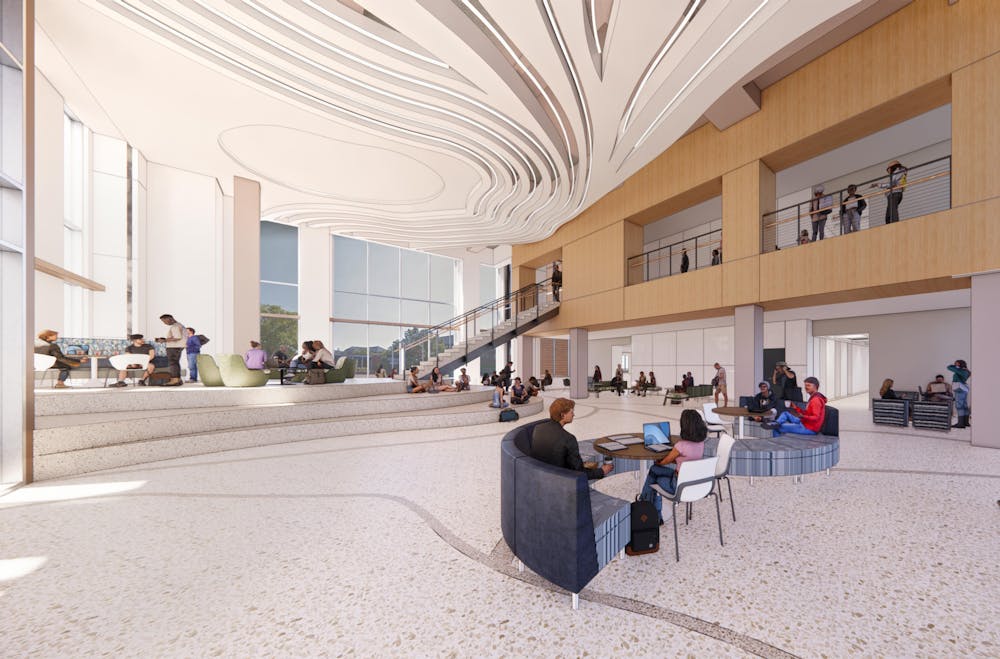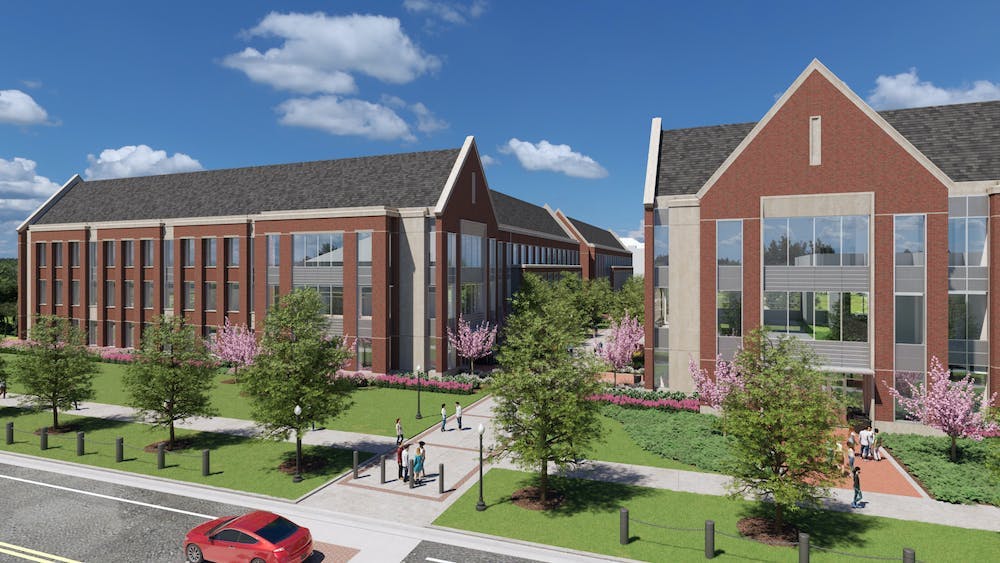Just a few months before announcing the largest freshman class in university history, Auburn began construction on a combined STEM and agricultural sciences complex, set for completion in 2026.
Six departments, split evenly from COSAM and the College of Agriculture, will move from their respective buildings into the new complex upon its completion. From COSAM, biological sciences, geosciences and mathematics and statistics will move. Crop soil and environmental sciences, horticulture and entomology and plant pathology will represent the College of Agriculture in the complex.
Currently, these programs are housed in Parker, Funchess and Comer Halls, as well as the Beard-Eaves-Memorial Coliseum. These buildings are some of the oldest on campus used for academic spaces and are often subject to continuous repairs.
The complex will contain three buildings, all close to Samford Avenue and Mell Street. Notable aspects of the complex include an outdoor classroom, a teaching garden as well as “more laboratory space... than any other type of space,” according to university briefings from facilities management officials.
Vini Nathan, provost and senior vice president for academic affairs, believes the decay and necessary repairs are “chronic.” After the completion of the complex, many of these buildings will be demolished, paving the way for further construction.
“Nobody should be in the coliseum,” Nathan said. “Geosciences is in the coliseum, and so that complete department is going to move.”

Interior designs for new STEM & Ag buildings
Nathan holds similar feelings about Funchess Hall, where biological sciences and the College of Agriculture hold classes.
"We should just take [Funchess Hall] down and build a brand-new building,” Nathan said.
Nathan sees the new buildings on campus, such as the ACLC and Mell Classroom Building, as “both qualitative and quantitative.” Not all of the new construction is in direct response to the growing student population.
“Sometimes we build buildings, and we take other buildings down,” Nathan said. “So, it doesn't completely increase what we have in terms of available space. It just replaces one kind of building with another client, for example, simplified it.”
While these changes are crucial, according to Nathan, physical spaces make up a small part of what education entails. She believes the new academic and administrative space of the forthcoming complex will serve to enhance the role of Auburn faculty, who are the main drivers of student education.
Nathan, who formerly served as dean of the College of Architecture, Design and Construction, always tries to consider the context of buildings as they are designed. She notes new buildings on campus try to have a timeless feel and will appear modern years into the future. The university aims to create an “overall institutional feeling,” independent of quickly changing design trends.
For the past five years, enrollment has consistently increased, with over 33,000 students currently enrolled. The 2023 freshman class, of nearly 6,000 students, is "the largest first-year class in the institution’s 167-year history," according to a university press release.
In response to growing enrollment, some fear that the university will continue to spread across Auburn, making it difficult for students to quickly travel across campus. However, Auburn plans to optimize the spaces on campus, allowing buildings to serve multiple purposes. The STEM + Ag Sciences Complex, for example, will be nearly 8,000 sq. ft. smaller than the existing buildings it will replace.
University documents note the complex “emphasizes sharing of resources.” Many of the components of the complex will be “right-sized,” or designed to increase efficiency within the available space.
As the university continues to grow, this will be a likely trend on campus. In response to limited space, the university will “[make the campus] more dense,” according to Nathan.
The university plans for buildings to last at least 50 to 75 years, Nathan said. As many buildings begin to hit this limit, Auburn must decide whether to renovate or demolish them. Yet, construction takes time, often prolonged by factors such as weather, labor or materials. So, while demand for certain buildings may be high, they may not be satisfied until years later.
Nathan also compared the Haley Center to a “tank.” In the coming years, the university plans to renovate the building by quadrant, according to Nathan. This will allow the university to save on spending and maximize the longevity of the Haley Center.
“We don't have swing space right now where I can take everybody from Haley, put them somewhere [and] fix Haley up,” Nathan said. “So, I have to wait for somebody to move out, which is the College of Education, then you know, [renovate Haley].”
Described by Nathan as a “round robin” situation, each quadrant of the Haley Center will be emptied and then renovated, with the other three quadrants supporting the entirety of the building for the time being. The Haley Center remains the largest academic building on campus, and nearly every day, tour guides take groups to the top of Haley for a bird’s eye view of the Auburn campus.
The Haley Center’s position as one of the most prominent buildings on campus will not cease any time soon. As Auburn continues to grow, both in terms of physical space and enrollment, the campus will represent a wide variety of buildings, new and old.
“These new buildings give a commitment to faculty who are coming [to Auburn], students to employers, that we are providing the best possible academic experience to our students and our faculty,” Nathan said. “We are not looking to be the biggest institution; we are looking to be one of the best.”
Do you like this story? The Plainsman doesn't accept money from tuition or student fees, and we don't charge a subscription fee. But you can donate to support The Plainsman.
Connor Copeland, sophomore in English literature and philosophy, has been with The Auburn Plainsman since fall 2023.





